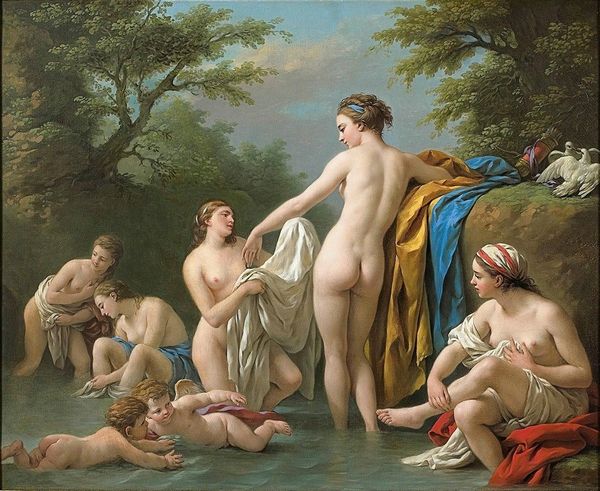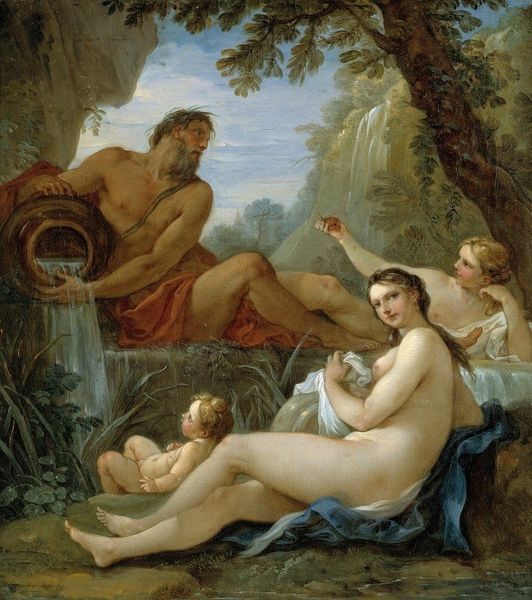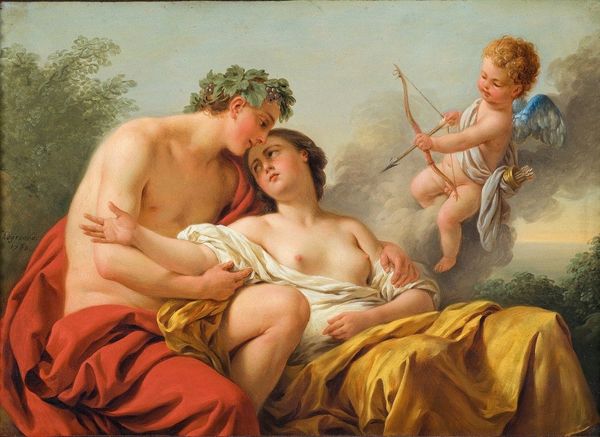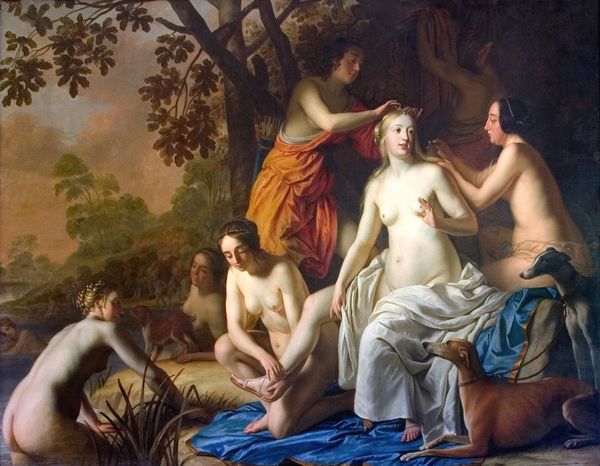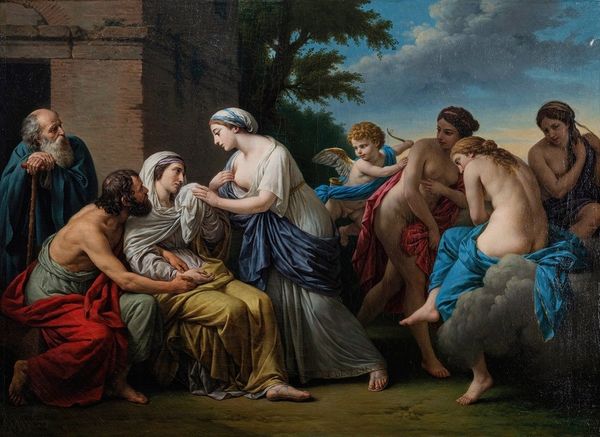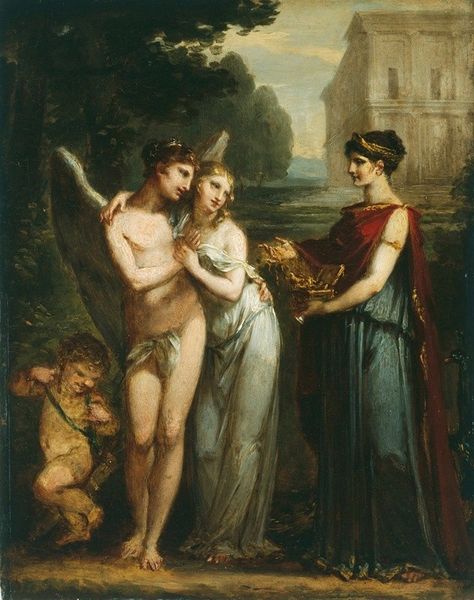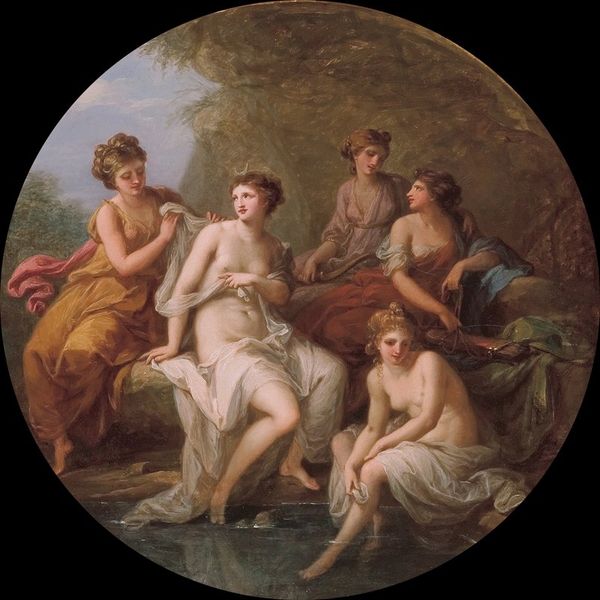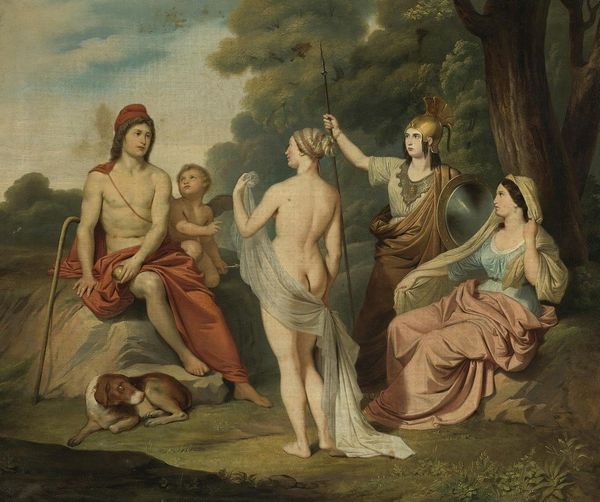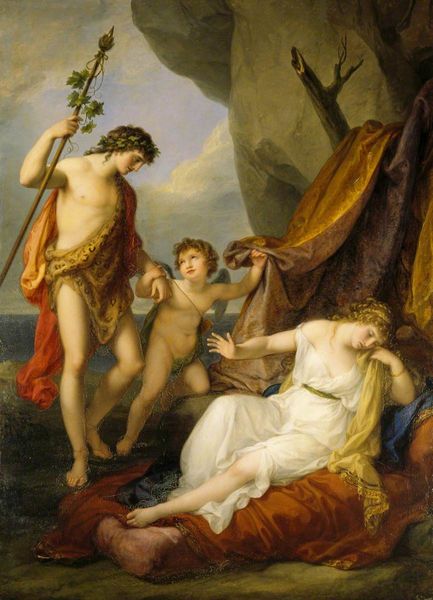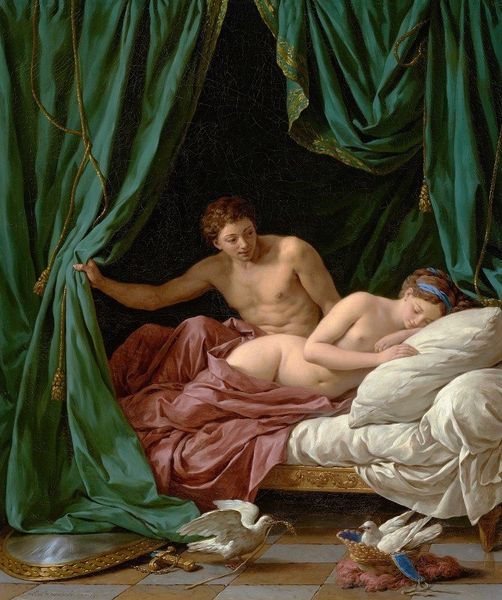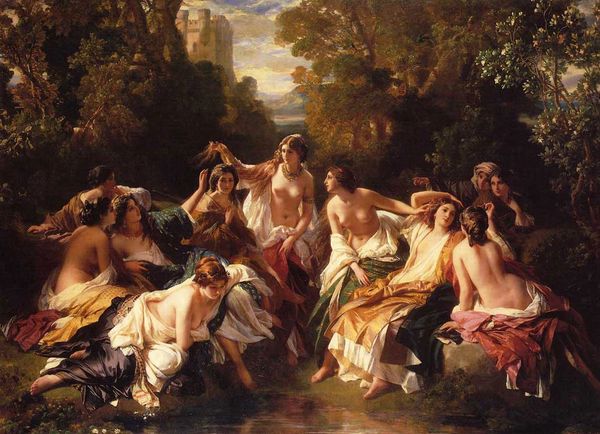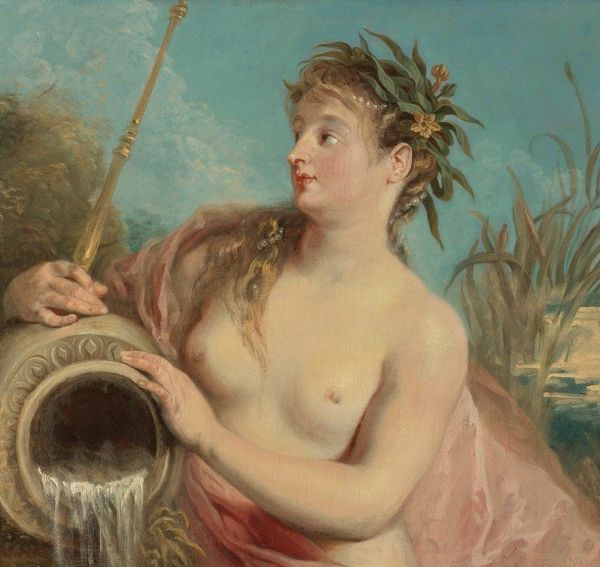
Copyright: Public Domain: Artvee
Curator: Today, we're looking at Louis-Jean-François Lagrenée’s "David and Bathsheba," an oil painting completed around 1770. Editor: My first impression is one of lightness—that Rococo palette of blues, pinks, and creams. The brushwork looks delicate, creating soft forms, particularly in the figures' skin tones. Curator: Absolutely. Lagrenée captures a critical moment laden with themes of power, desire, and morality. The scene depicts Bathsheba, spied upon by King David while she bathes, initiating a chain of events with dire consequences. Consider the societal constraints upon women at the time; Bathsheba is powerless against the king’s gaze and subsequent actions. Editor: The composition certainly guides our gaze. The diagonal of Bathsheba's body leads from the bottom right to the top left, echoing the gentle incline of the architecture in the background, framing the whole. And her downward gaze emphasizes her vulnerability and lack of awareness. The interplay of textures – the smoothness of the skin, the rougher drapery – adds depth. Curator: It’s also important to recognize how this scene often romanticizes or sexualizes female vulnerability, particularly within the male gaze. This portrayal can perpetuate harmful ideas of female passivity and objectification. Consider how this differs when the roles are reversed, and how rarely those reversed roles are shown! Editor: Yes, but how much is that reading imposed? Looking at Lagrenée’s choice of rendering, I see his delicate line work, his composition’s echoing lines. I sense the careful layering of pigments. Are we perhaps risking the art's intrinsic elements for the sake of… agenda? Curator: Art isn't created in a vacuum. Examining those intrinsic qualities alongside societal forces helps us truly understand the art's message and its role in shaping perception. Art is more than what it contains formally— it reflects and shapes the context of its creation. Editor: I concede there's a dialogue to be had, between close visual reading and the recognition of sociopolitical themes, if the visual rendering warrants it, as it does here. Curator: Precisely! It encourages a more nuanced understanding of historical narratives. Editor: I have a greater sense of appreciation for the broader dialogue the painting invites now.
Comments
No comments
Be the first to comment and join the conversation on the ultimate creative platform.
